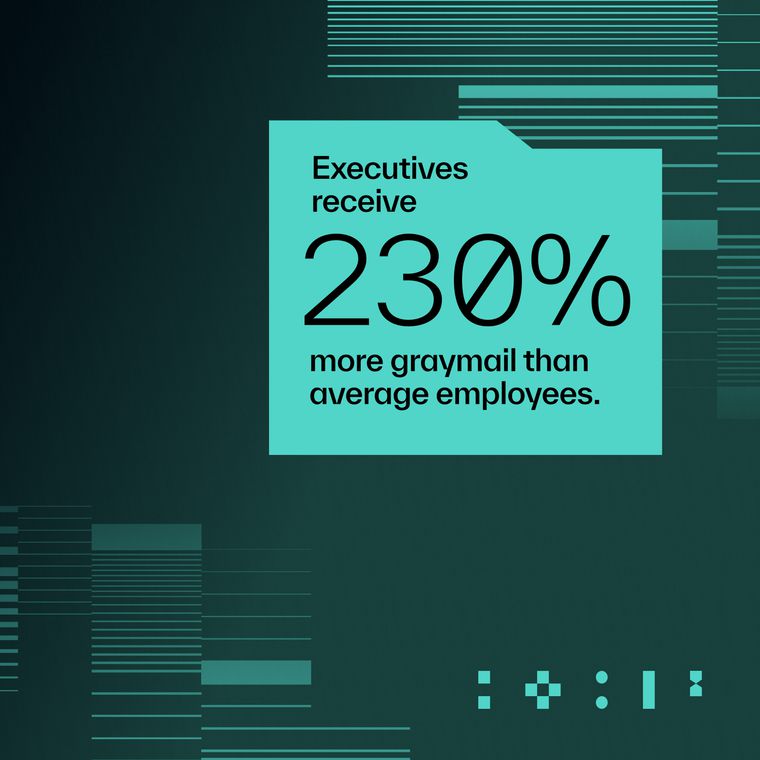How AI-Powered Email Security Transforms Enterprise Protection Strategies
Discover how AI-powered email security redefines enterprise data protection, protecting assets against evolving cyber threats and compliance challenges.
July 2, 2025
Protecting enterprise data used to mean locking down networks and controlling endpoints. Now, sensitive information moves across email, SaaS apps, and collaboration tools—often without centralized oversight. Attackers have adapted too, targeting identities, manipulating insiders, and exploiting behavioral gaps to quietly exfiltrate data.
This article outlines a modern approach to enterprise data protection, built for remote or hybrid work, cloud sprawl, and increasingly sophisticated threats. Security leaders need strategies that reduce risk without adding friction. Here's where to start.
Why Enterprise Data Protection Needs a Rethink
Protecting enterprise data now requires a shift from static controls to intelligent, behavior-driven defenses.
Legacy tools weren’t built for how data moves today, across SaaS platforms, messaging apps, and decentralized teams. Sensitive information flows constantly, often without triggering traditional data loss prevention (DLP) rules or fitting cleanly into pre-defined policies.
Attackers know this. They exploit trusted accounts, impersonate internal users, and quietly exfiltrate data over weeks or months. And because many tools still rely on static policies or simple keyword matches, most of these threats slip through unnoticed.
Security leaders need more controls and more context. Understanding who’s accessing what data, how, and why is the new baseline. Without that, teams face alert fatigue, compliance gaps, and blind spots that adversaries are eager to exploit.
Modern data protection starts with behavior: spotting anomalies, mapping intent, and surfacing the real risks buried in the noise. Anything less is just catching what’s obvious—and missing what matters most.
What Enterprise Security Teams Are Up Against
Security teams face constant pressure to protect data without slowing down the business, but visibility gaps keep growing.
SaaS sprawl, remote or hybrid work, and decentralized access have fragmented visibility across the organization. Sensitive files are shared over email, synced to third-party apps, or sent through chat, all outside traditional DLP perimeters.
Meanwhile, attackers have adapted. Business email compromise (BEC), insider threats, and account takeovers now drive many of the most damaging data leaks. These threats don’t trip legacy rules—they blend in, relying on trust and access rather than malware or brute force.
At the same time, most teams deal with:
High alert volumes and limited context
Manual investigations that stretch already thin resources
Siloed tools that don’t talk to each other
Compliance obligations that demand full visibility without full control
Data protection is failing because existing tools can’t see what matters. Closing that gap requires better context, smarter signals, and defenses that adapt as fast as attackers do.
Core Capabilities of a Modern Data Protection Program
Effective data protection requires context—who’s accessing sensitive information, how they’re using it, and whether that behavior aligns with normal patterns.
Policies alone can’t keep up with how data moves across cloud apps, email, and collaboration platforms. Most legacy tools overwhelm teams with noise, miss key signals, and leave gaps in visibility. To close those gaps, security programs need a foundation of capabilities that prioritize intent, streamline enforcement, and scale with the business.
Context-Aware Access Controls
Most access decisions still rely on static attributes like job title, department, or group membership—signals that quickly become outdated or overly permissive. As environments shift toward zero trust, those models leave too much room for misuse, especially when insider threats and credential abuse are in play.
Context-aware access controls offer a smarter approach. They evaluate real-time signals, like device hygiene, geographic anomalies, session behavior, and usage patterns, to make more dynamic access decisions. This reduces exposure without disrupting legitimate work and helps security teams enforce least privilege in a way that actually adapts to risk.
For high-value targets like executives, service accounts, or admins, static rules simply aren’t good enough. When access controls adjust in real time, they become a living defense layer, not just a checkbox in an identity system.
Behavioral Anomaly Detection
Traditional rule-based systems only catch what they’re explicitly told to look for, often missing the subtle indicators that signal real risk. Behavioral anomaly detection flips that approach by establishing a baseline of normal activity for each user and surfacing deviations that may indicate compromise, misuse, or data exfiltration.
This capability is especially valuable in scenarios where access appears legitimate on the surface. For example, an executive downloading large volumes of files from an unusual location might bypass basic DLP thresholds but trigger a behavioral flag. The same applies to service accounts suddenly interacting with data in ways that don’t align with past usage patterns.
By continuously learning what “normal” looks like for individuals and teams, behavioral detection adds a critical layer of intelligence. It helps security teams prioritize investigations based on context and intent, reducing noise and exposing threats that signature-based tools never see.
Unified Visibility Across Communication and Collaboration Channels
Security teams can’t protect what they can’t see. Sensitive data moves across email, chat, cloud drives, project tools, and third-party integrations, often with no unified monitoring in place. Each system generates its own logs, uses different data formats, and exposes limited signals, forcing analysts to stitch together fragmented context during an investigation.
Unified visibility brings those disparate sources into a single operational view. It allows security teams to track data movement across platforms, correlate user behavior between tools, and detect multi-channel exfiltration attempts that traditional DLP would miss. For example, spotting a user who shares confidential files in Slack shortly after forwarding similar documents via email.
This capability reduces investigation time, strengthens incident response, and enables more consistent policy enforcement, especially in environments where shadow IT and decentralized access have become the norm. Without unified visibility, threat detection turns into guesswork. With it, the security operations center (SOC) gets clarity, speed, and control.
Proactive Insider Risk Detection
Not every data loss event stems from a malicious outsider. In many cases, a trusted employee, either acting with intent, under pressure, or simply making a mistake, is the reason an attack was successful. And while most organizations monitor external threats closely, few have the same level of visibility into insider behavior.
Proactive insider risk detection requires more than keyword scanning or static thresholds. It means understanding user behavior over time and identifying deviations that signal misuse, even when the activity technically complies with policy. For example, an employee who rarely accesses sensitive data suddenly downloads large volumes before resigning. Or a contractor forwarding confidential material to a personal inbox late at night.
This capability depends on behavioral baselining, identity context, and continuous analysis. When done well, it surfaces early indicators of risk without generating noise. It also helps distinguish between human error and malicious intent, reducing overreliance on blunt enforcement while still protecting the business.
Automated Enforcement Based on Intent and Context
Enforcement is where most data protection strategies break down. Rules get bypassed, alerts get buried, and manual reviews slow everything down. Without automation, even the best detection signals fail to drive action.
Automated enforcement closes that gap by using context—who the user is, what data they’re accessing, and how they’re behaving to make real-time decisions. This could mean auto-quarantining a suspicious email, blocking a file transfer midstream, or escalating an event for investigation based on risk level. The key is precision: acting only when the behavior truly deviates from normal or presents meaningful risk.
Done right, this reduces alert fatigue, shortens response time, and ensures consistent policy application at scale. It also frees up analysts to focus on what matters—investigating true threats instead of chasing false positives.
For CISOs, this capability isn’t about removing human judgment. It’s about augmenting the team with enforcement that’s faster, smarter, and aligned with how data moves today.
How AI Strengthens Enterprise Data Protection
Traditional data protection tools weren’t built to understand behavior, context, or intent. AI is.
Legacy DLP systems rely on static rules, keyword matching, and predefined thresholds. This approach now struggles to keep up with dynamic environments and sophisticated threats. Attackers exploit these limitations by mimicking trusted users, slipping through whitelisted channels, or slowly exfiltrating data in ways that don’t trigger alerts. Meanwhile, insider threats and account misuse often go unnoticed because they don’t technically break the rules.
AI changes that. By analyzing vast amounts of behavioral, identity, and communication data in real time, AI systems can detect subtle signals that static tools miss—signals that indicate risk, not just rule violations.
Where AI makes the biggest impact:
Behavioral Baselining at Scale: Learns normal activity for each user and account, flagging meaningful deviations others miss.
Anomaly Detection With Identity Context: Surfaces actions that don't align with a user’s historical behavior, peer group, or role.
Cross-Channel Correlation: Connects signals across email, chat, and SaaS tools to expose complex patterns of data misuse.
Intent-Based Prioritization: Ranks alerts by risk and context, reducing noise and helping the SOC focus on what matters.
Automated, Adaptive Enforcement: Applies real-time action—blocking, escalating, or revoking access—when confidence is high.
What makes these capabilities valuable is not just detection—it’s precision. AI doesn’t replace human analysts, but it elevates them. It frees security teams from triaging false positives and allows them to focus on the events that matter most.
Abnormal applies these AI capabilities across the email and SaaS ecosystem, giving security teams visibility into behavioral risks that legacy tools were never designed to catch.
Securing Your Organization’s Future
Enterprise data protection requires alignment across people, processes, and technology. Building a security-first culture, backed by strong policies and intelligent tools, strengthens resilience against evolving threats.
Adaptive strategies assess risk continuously and adjust in real time. When done right, they protect customer trust, support business continuity, and reduce long-term risk. The question isn’t whether an attack will happen. It’s whether your defenses are ready when it does.
Abnormal helps security teams protect what matters most. Book a demo to see how AI-driven email security can enhance your enterprise data protection strategy.
Related Posts
Get the Latest Email Security Insights
Subscribe to our newsletter to receive updates on the latest attacks and new trends in the email threat landscape.


